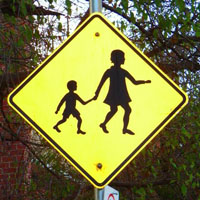 7 June 2016
7 June 2016
We have just released our report Children and Young People in State Care in SA Government Schools – 2008-2015
Reading the most recent NAPLAN results, rates of suspension and exclusion, rates of disability and attendance figures together gives a more complete picture of how children and young people in care are doing in the state school system.
Here are the key takeouts
NAPLAN results show that 10 to 20% fewer children in care achieve the National Minimum Standard in literacy and numeracy than the state as a whole. The disparity in reading and writing becomes greater than with numeracy skills as children age. This figure should also be read with the knowledge that four or five times as many children in care are excused from NAPLAN testing than the state school population as a whole.
Disability rates for children in care enrolled in government schools are much higher than the state as a whole (30% versus 9%). As an example, the rate of children in care attending government schools in 2015 with an intellectual disability was nearly seven times that of those enrolled in government schools as a whole. The rate of children in care reported as having a speech and language disability was over three times the rate of those enrolled in government schools as a whole.
Exclusion rates for children in care are four to five times the rate for the general school population, though the small numbers of children in care makes determining trends difficult. Rates of suspension are similarly higher for children in care, being more evident in primary-age students.
Absence rates are similar for children in care in government schools compared with the state school population as a whole. Interestingly:
- students with a disability who are in care have a lower absence rate than that reported of children with a disability within the overall school population, that is, they are more likely to be attending than those who have a disability but are not in care.
- this is also the case for Aboriginal children and young people
- students in care from non-English speaking backgrounds have about twice the absence rate than that reported for those students from non-English speaking backgrounds who are not in care.
You can read the full report with graphs, references and notes on areas for attention from our website.
